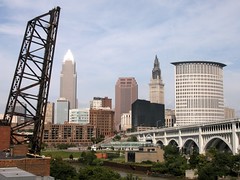You may have noticed the snazzy poll I posted on my blog the other day. There’s a number of different survey and poll plugins for WordPress but all the ones I’ve looked at have caveats and limitations. You can also use a service like SurveyMonkey but it has some data limitations for free accounts. Instead, I used Google Docs and Spreadsheets to create a survey quickly and easily. Here’s how to do it.
1. Getting to Google Docs and starting your form
We’re going to assume you have a Gmail account or have signed up for some other Google service already. Go to http://docs.google.com. Click on New -> Form
2. Creating your form
This is actually pretty easy, and the online help does a pretty good job explaining what to do. You have a number of options when creating a question – you can make it multiple choice, full text, or even a numerical scale, and you can mark some questions as required. If you’re looking for the “Add question” button, it’s up at the top of the page rather than below the last question.
3. Publishing the survey on your site
After you’ve created your form, use the More Actions button to find the Embed option. Just copy this iframe into your blog post – it’s that simple. You’ll get code that looks something like this:
<iframe src=”http://spreadsheets.google.com/embeddedform?key=ppevxmL24UqnRb77Xy3AOWg” width=”310″ height=”1044″ frameborder=”0″ marginheight=”0″ marginwidth=”0″>Loading…</iframe>
You can change the height and weight to better fit your blog template. Keep in mind that some blogging software will not let you post HTML code and others, like WordPress, require you to use the HTML view.
If you can edit your template or sidebar you can even include the poll on every page, instead of just putting it in a post.
4. Getting data
Here’s where it gets really cool – the data is automatically collected into a spreadsheet that you can share, edit online, or export to Microsoft Excel. It’s pretty easy to export CSV for a statistical package like SPSS too.
There’s an optional fifth step, creating a chart or graph to let your users see the results, that I’ll cover later. If you can’t wait just jump back to my post about urban usability and read about how I created the time-series chart there.
